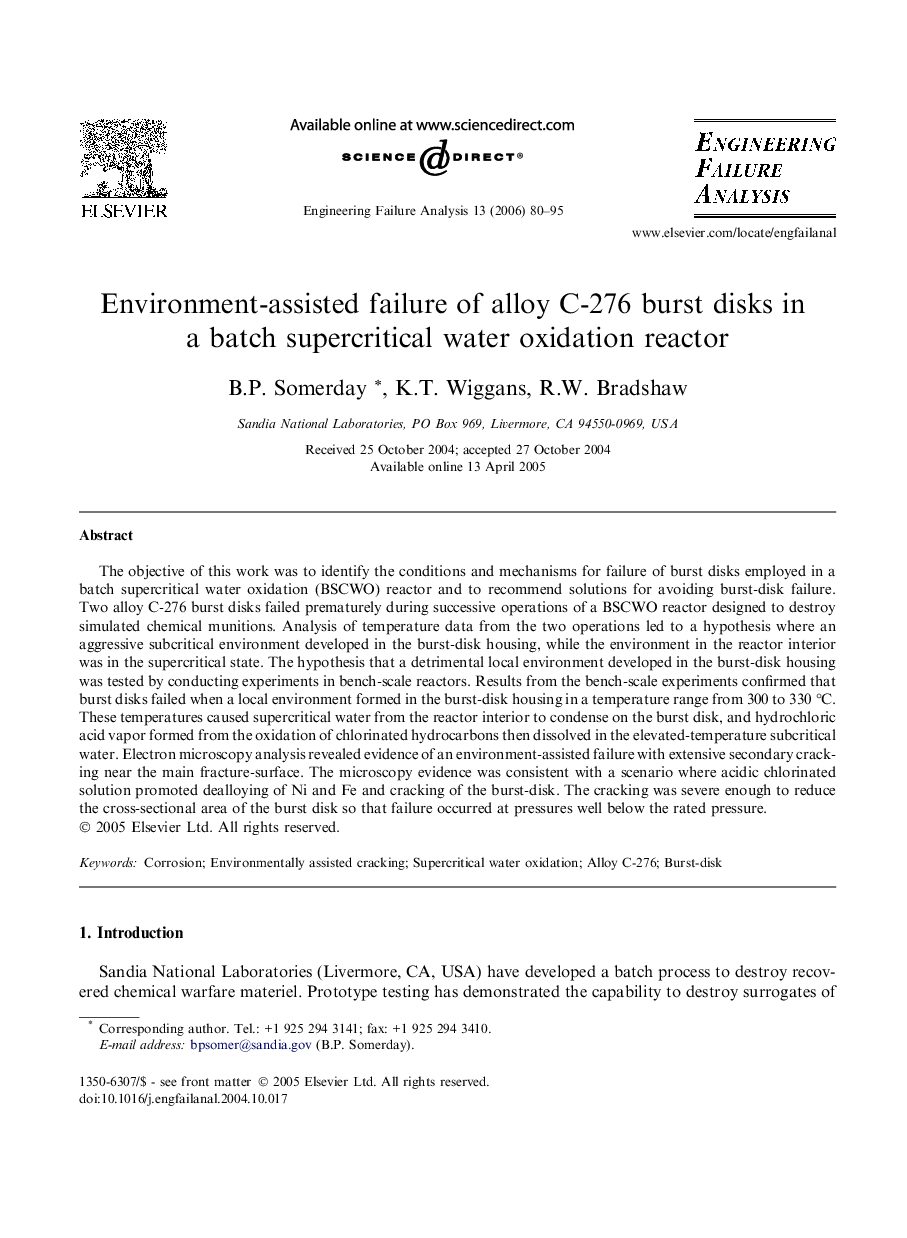| Article ID | Journal | Published Year | Pages | File Type |
|---|---|---|---|---|
| 764587 | Engineering Failure Analysis | 2006 | 16 Pages |
The objective of this work was to identify the conditions and mechanisms for failure of burst disks employed in a batch supercritical water oxidation (BSCWO) reactor and to recommend solutions for avoiding burst-disk failure. Two alloy C-276 burst disks failed prematurely during successive operations of a BSCWO reactor designed to destroy simulated chemical munitions. Analysis of temperature data from the two operations led to a hypothesis where an aggressive subcritical environment developed in the burst-disk housing, while the environment in the reactor interior was in the supercritical state. The hypothesis that a detrimental local environment developed in the burst-disk housing was tested by conducting experiments in bench-scale reactors. Results from the bench-scale experiments confirmed that burst disks failed when a local environment formed in the burst-disk housing in a temperature range from 300 to 330 °C. These temperatures caused supercritical water from the reactor interior to condense on the burst disk, and hydrochloric acid vapor formed from the oxidation of chlorinated hydrocarbons then dissolved in the elevated-temperature subcritical water. Electron microscopy analysis revealed evidence of an environment-assisted failure with extensive secondary cracking near the main fracture-surface. The microscopy evidence was consistent with a scenario where acidic chlorinated solution promoted dealloying of Ni and Fe and cracking of the burst-disk. The cracking was severe enough to reduce the cross-sectional area of the burst disk so that failure occurred at pressures well below the rated pressure.
